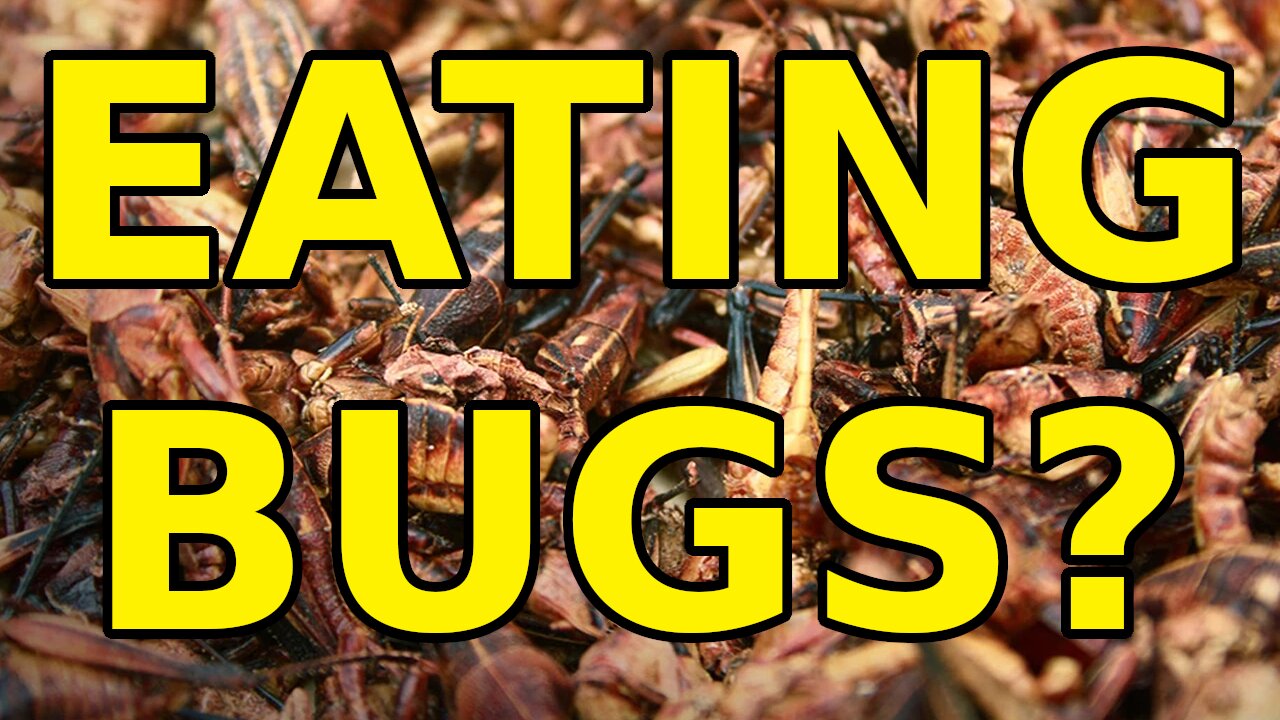Premium Only Content

Why We Won't be Eating Bugs in the Future
Support the Channel:
https://www.subscribestar.com/leather-apron-club
https://www.buymeacoffee.com/leatherapr9
All Social Links: https://bio.link/leatherapronclub
SOURCES CITED:
[1] Huis, Arnold & Van Itterbeeck, Joost & Klunder, Harmke & Mertens, Esther & Halloran, Afton & Muir, Giulia & Vantomme, Paul. (2013). EDIBLE INSECTS future prospects fo food and feed security.
[2] (2006) Livestock's Long Shadow: Environmental Issues and Options. Food and Agriculture Organization of the United Nations (FAO), Rome.
[3] Gerber, P.J., Steinfeld, H., Henderson, B., Mottet, A., Opio, C., Dijkman, J., Falcucci, A. & Tempio, G.
2013. Tackling climate change through livestock – A global assessment of emissions and mitigation
opportunities. Food and Agriculture Organization of the United Nations (FAO), Rome
[4] https://www.epa.gov/ghgemissions/sources-greenhouse-gas-emissions#agriculture
[5] Oonincx DGAB, van Itterbeeck J, Heetkamp MJW, van den Brand H, van Loon JJA, van Huis A (2010) An Exploration on Greenhouse Gas and Ammonia Production by Insect Species Suitable for Animal or Human Consumption. PLoS ONE 5(12): e14445. https://doi.org/10.1371/journal.pone.0014445
[6] https://extension.sdstate.edu/how-much-meat-can-you-expect-fed-steer
[7] Lundy ME, Parrella MP (2015) Crickets Are Not a Free Lunch: Protein Capture from Scalable Organic Side-Streams via High-Density Populations of Acheta domesticus. PLoS ONE 10(4): e0118785. https://doi.org/10.1371/journal.pone.0118785
[8] Oonincx DGAB, de Boer IJM (2012) Environmental Impact of the Production of Mealworms as a Protein Source for Humans – A Life Cycle Assessment. PLoS ONE 7(12): e51145. https://doi.org/10.1371/journal.pone.0051145
FOR FULL SOURCES CITED SEE: https://docs.google.com/document/d/1bPzgYJTl88el6emIgG089fm0qkn75WcVljSML6xzgSI/edit?usp=sharing
FERTILIZER CALCULATIONS:
INSECTS:
In this video by Entomo farms, owner Darrin Goldin says a full harvest of one of their barns produces about 2500lbs of crickets and 2000lbs of frass. [https://www.youtube.com/watch?v=40yXvtq8x8s] @ 5:20
2500lbs of crickets should have 1500lbs of protein in it (assuming 60% protein when dry)
so 1500 lbs of protein for every 2000lbs dry fertilizer, or a 3/4 ratio
COWS:
A beef cow produces about 75lbs of manure a day [https://ag.umass.edu/crops-dairy-livestock-equine/fact-sheets/manure-inventory] (more for dairy cows)
According to the Journal of Dairy Science, about 85% of this manure is water, so they make 11.25lbs of dry weight manure a day.
A cow produces approx. 440lbs of beef, about 25% of which is protein, so 110lbs of protein in a lifetime
according to the USDA, cows are slaughtered at 30-42 months old, assuming 36 months average [https://www.ams.usda.gov/grades-standards/slaughter-cattle-grades-and-standards]
110lbs of protein over 36 months = 3.0555 lbs of protein a month, or about 0.10185185 lbs of protein a day
So in a day, a cow produces 11.25lbs of dry manure a day, and 0.10185185 lbs of protein a day
Comparing these ratios of dry weight manure to protein we get:
COWS: 11.25 / 0.10185185 = 110.45
INSECTS: 4 / 3 = 1.33
VIDEO ATTRIBUTION:
Stock footage provided by Videvo, downloaded from videvo.net
FLATICON ATTRIBUTION: "https://www.flaticon.com/free-icons/co2" title="co2 icons" Co2 icons created by Freepik - Flaticon
-
 6:53
6:53
Leather Apron Club
2 years agoLet's talk about RUSSEL BRAND and his Guests | MEDIA REPRESENTATION WEEK PART 5
2.01K1 -
 45:13
45:13
pewculture
14 hours agoThe Pew Culture Podcast #17 - Lioness
13.4K1 -
 LIVE
LIVE
Total Horse Channel
10 hours ago2025 Region 11 Arabian & Half-Arabian Championship Show - Saturday
121 watching -
 7:31
7:31
Dr. Nick Zyrowski
9 days ago#1 Most IMPORTANT Benefit of NAC ( N-Acetyl Cysteine)!
358K38 -
 2:39:44
2:39:44
Badlands Media
19 hours agoThe Liberty Den Ep. 144: Body Counts, Biden’s Exit Plan, and What They’re Not Telling You
154K43 -
 2:17:11
2:17:11
FreshandFit
15 hours agoMyron Vs Liberals And Dancing Israelis...
61.8K58 -
 4:09:01
4:09:01
Parallel 8 Media
11 hours agoFriday Night Huddle - Ep 8
103K43 -
 2:04:46
2:04:46
TimcastIRL
14 hours agoFBI Releases TRANS Shooter MANIFESTO Exposing Anti-Christian HATE | Timcast IRL
289K150 -
 1:12:03
1:12:03
Man in America
19 hours ago🚨 They're SPRAYING Us Like Insects—And Now They're Targeting Our Kids
87.3K92 -
 2:12:01
2:12:01
I_Came_With_Fire_Podcast
16 hours agoA Brave New Vice: Numb the Conscience, Call it Progress
52.9K14